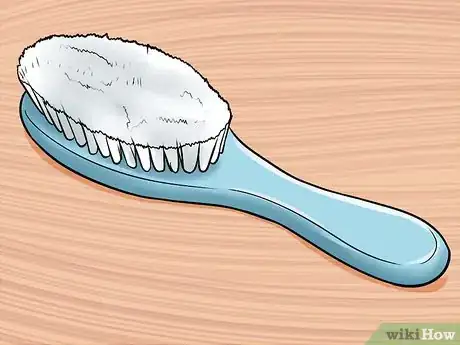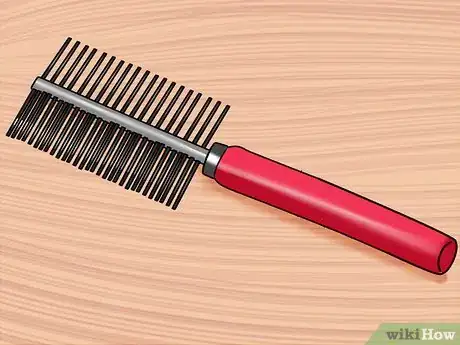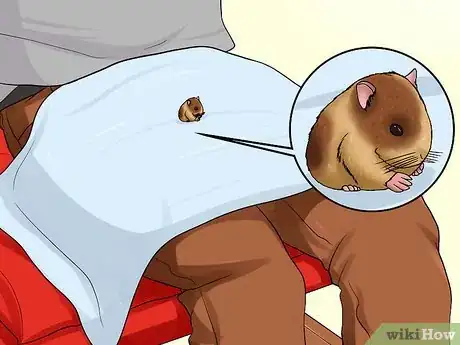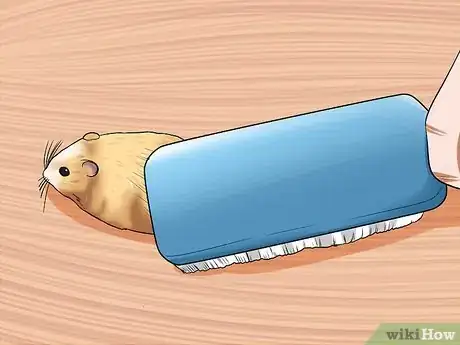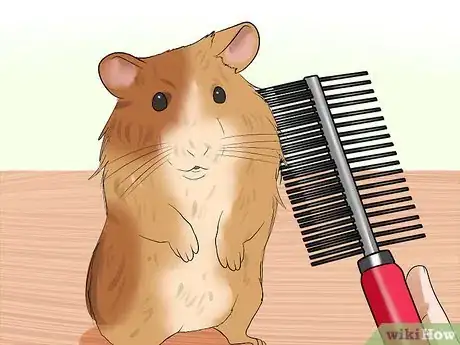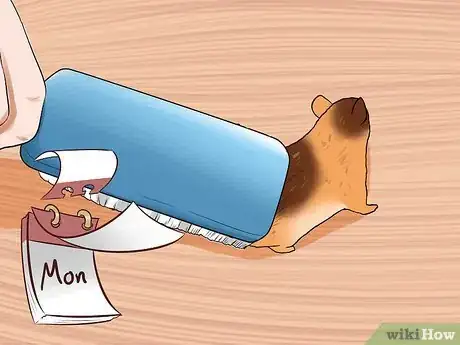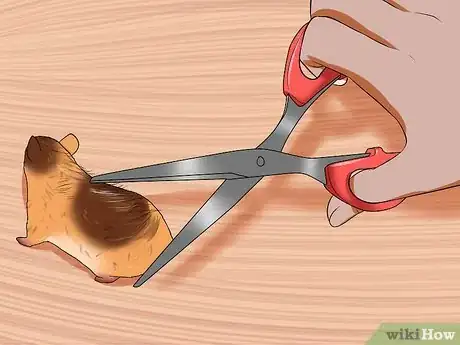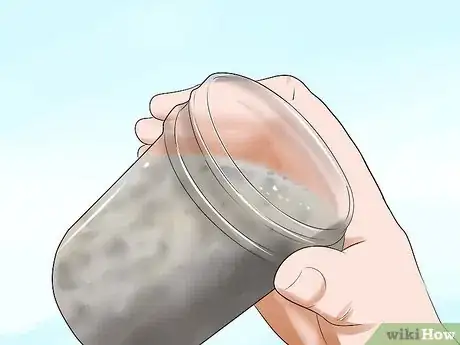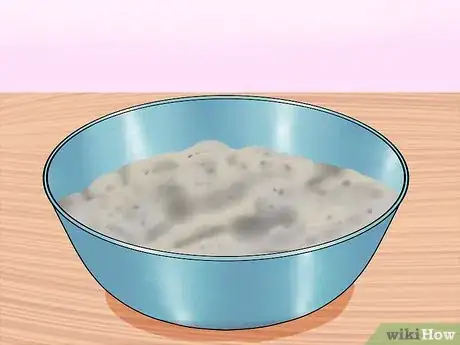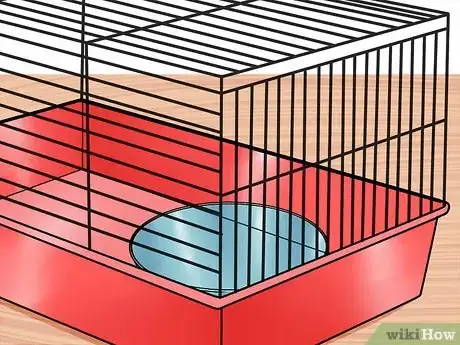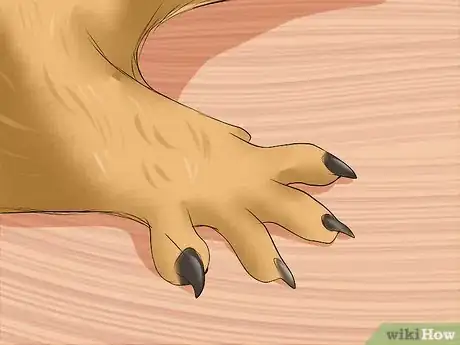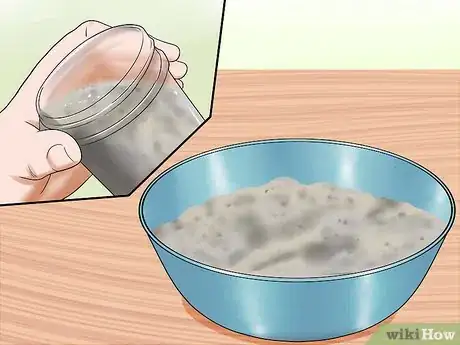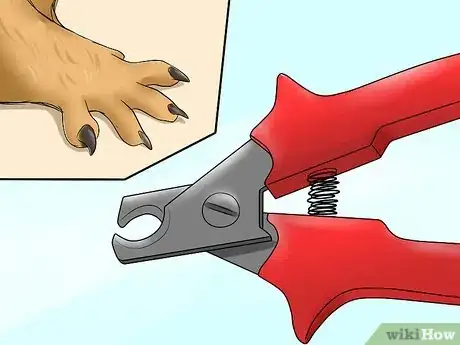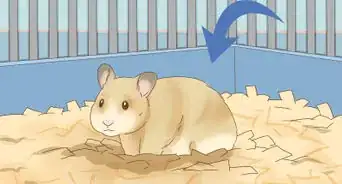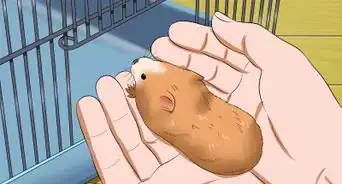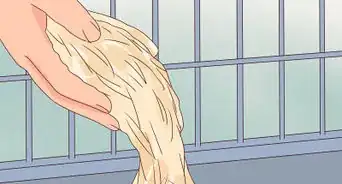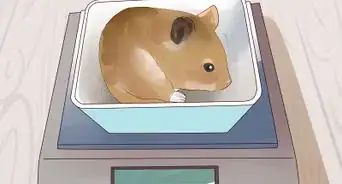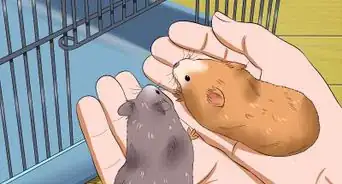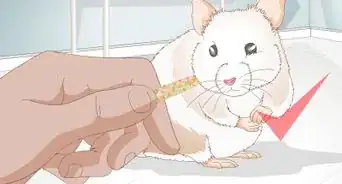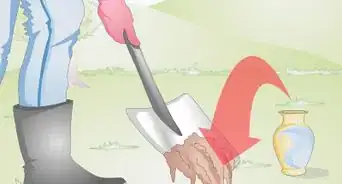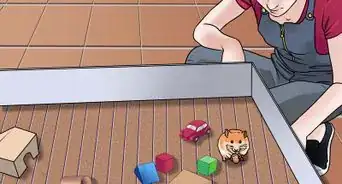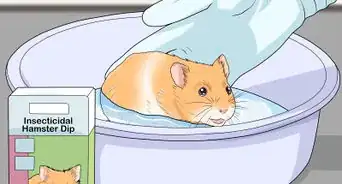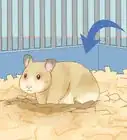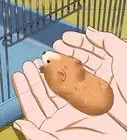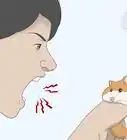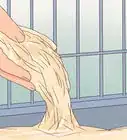This article was co-authored by Pippa Elliott, MRCVS. Dr. Elliott, BVMS, MRCVS is a veterinarian with over 30 years of experience in veterinary surgery and companion animal practice. She graduated from the University of Glasgow in 1987 with a degree in veterinary medicine and surgery. She has worked at the same animal clinic in her hometown for over 20 years.
wikiHow marks an article as reader-approved once it receives enough positive feedback. In this case, 89% of readers who voted found the article helpful, earning it our reader-approved status.
This article has been viewed 26,264 times.
Hamsters are beloved and delightful pets. They are relatively low-maintenance, but some regular grooming practices will keep them looking and feeling great. Most importantly, hamsters may need frequent grooming (especially long-haired Syrian hamsters). Your pet will also enjoy having a sand bath to keep its fur and nails healthy. If your hamster needs its claws to be trimmed, you can attempt to do so yourself, or ask a professional for assistance. Grooming is also a great way to bond with your hammy!
Steps
Brushing Your Hamster's Fur
-
1Purchase a brush. Hamsters are tiny creatures, so a small brush is all you really need. You can look for one at pet supply stores. However, a soft bristle toothbrush or paintbrush, about 1 inch (2.5 cm) in size, will also work well.
-
2Buy a comb if your hamster is long-haired. The fur length of hamsters can vary. Some Syrian hamsters can have very long fur, however, making it difficult to groom them with a brush. If yours has long hair, you can use a small pet comb (such as a cat flea comb) instead.[1]Advertisement
-
3Have plenty of treats available. Some hamsters love being brushed, others are more reluctant to be groomed in this way. It is a good idea to have some treats available when attempting to brush your hamster, especially if it is a new pet. Offering it plenty of treats before, during, and after brushing will encourage it to form positive associations with being groomed.
-
4Place your hamster in your lap. Gently pick up your hamster and set it in your lap. Pet it and offer it treats. Do not start brushing until it seems calm.
-
5Brush your hamster’s fur. Move the brush or comb lightly down the hamster’s belly back. Always work in the direction that your pet’s fur grows in. This will make the process more comfortable for the hamster.
-
6Handle tangles carefully. If you encounter knots or tangles in your hamster’s fur, do not force your way through them, or tug at them. Instead, gently brush through them a little at a time until they are cleared.[2]
-
7Groom your hamster frequently. Brush your hamster any time it appears to have tangles or dirt in its fur. Otherwise, groom your pet about once a week. Some hamsters, especially long haired Syrians, may need brushing twice a week. This will prevent matting.[3]
-
8Trim your hamster’s hair if necessary. If your hamster is prone to frequent matting or tangling, or refuses to be brushed, you may need to shorten its fur. Carefully use a pair of cosmetic scissors to trim its fur to about 1 inch in length. Work cautiously so that you don’t cut the hamster. If you feel anxious about trimming the fur, see a vet or professional pet groomer for help.
Giving a Sand Bath
-
1Purchase chinchilla sand. Making a container of chinchilla sand available to your hamster will help keep it clean and groomed. This product is readily available at pet supply stores.[4]
-
2Fill a bowl with chinchilla sand. A bowl made of a hamster-safe material such as terra cotta is ideal. Place enough chinchilla sand in the bowl so that it is about one-half to three-quarters full. That way, your hamster will be able to easily climb in and out of the bowl.[5]
-
3Place the bowl in your hamster’s cage. Your hamster should be able to freely access the bowl of chinchilla sand, and it is perfectly safe to leave the bowl in its cage. Setting the bowl near the hamster’s exercise wheel can encourage it to use the sand.[6]
-
4Observe how your hamster uses the sand. Many hamsters will roll around in the chinchilla sand, using it as a dust bath. This will keep their fur clean and free of greasy buildup. Some hamsters may use the sand bowl as a litterbox. Otherwise, it is fine to reuse the sand as long as it is not soiled.[7]
Keeping Your Hamster's Claws Trimmed
-
1Remember that most hamsters do not need to have their claws trimmed. Clipping a hamster’s tiny claws can be difficult to do correctly, and in many cases it is unnecessary. Most hamsters will be able to keep their own claws trimmed naturally, just by playing and behaving normally.
-
2Give your hamster materials to encourage healthy claws. You can help your hamster keep its claws trimmed, however, by placing objects for it to scratch inside its cage. A bowl of chinchilla sand, like one used for sand bathing, will often do the trick. You can also try putting a clay tile in your pet’s cage. When your hamster digs or scratches, its claws will be naturally trimmed.[8]
-
3Clip your hamster’s claws if necessary. If your hamster’s claws are unusually long, or do not seem to stay trimmed naturally, you can attempt to clip them. However, make sure that your hamster is calm before you begin, and offer it plenty of treats.
- Hamster claws are very small, and so you may find that a magnifying glass comes in handy. Good lighting will also make it easier to see what you are doing.
- You can use nail clippers to do the job.
- Grasp your hamster’s claw gently but firmly.
- Be patient and cautious, and clip only the very end of your hamster’s claw. If you try to clip off too much, you may hurt your hamster or cause it to bleed.
- If your hamster becomes anxious or wiggles away while you are trying to clip its claws, just let it go and try again latter. Forcing the hamster to have its nails clipped will only make it frightened, and the process will become more difficult.
- Trimming the longest claws first can be most effective. That way, if your hamster wiggles away, you will at least have helped some.
- You should not need to clip your hamster’s claws more than once a month, and perhaps even less frequently.
-
4See a vet if you need help. If you are really struggling to clip your hamster’s claws, or feel like it has a claw-related issue (unusual length, hangnails, infection, etc.), contact a vet. It is better to get help than to accidentally hurt your pet.
References
- ↑ http://www.towyvale.com/info/groom.html
- ↑ http://www.towyvale.com/info/groom.html
- ↑ http://www.towyvale.com/info/groom.html
- ↑ http://www.humanesociety.org/news/magazines/2012/05-06/welcome_to_hamsterdam_heaven.html
- ↑ http://www.humanesociety.org/news/magazines/2012/05-06/welcome_to_hamsterdam_heaven.html
- ↑ http://www.smallangelsrescue.org/wp-content/uploads/2014/07/SARI-Hamster-Mini-Care-Packet.pdf
- ↑ http://www.smallangelsrescue.org/wp-content/uploads/2014/07/SARI-Hamster-Mini-Care-Packet.pdf
- ↑ http://www.humanesociety.org/news/magazines/2012/05-06/welcome_to_hamsterdam_heaven.html
